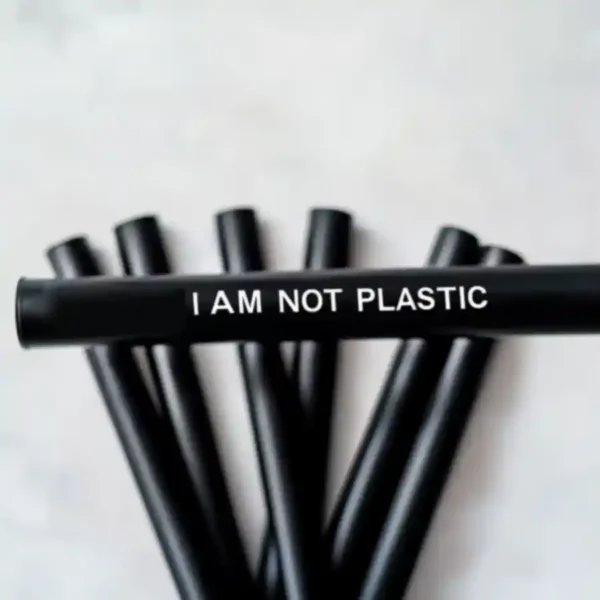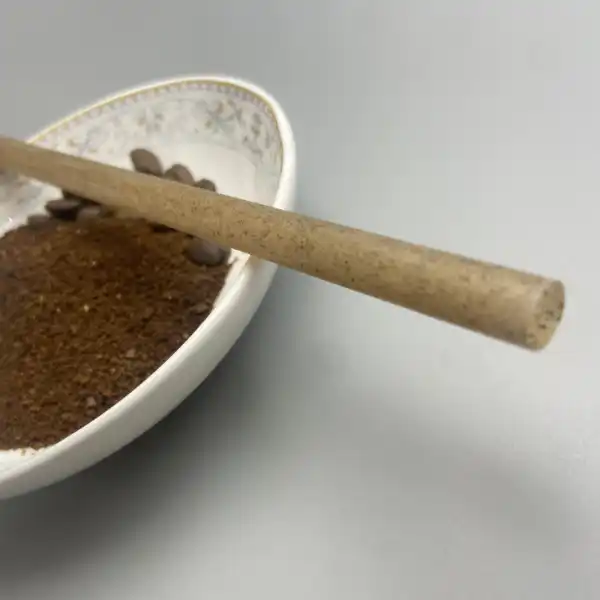Transitioning to eco-friendly straws and drinkware is an important step for businesses that aim to reduce their environmental impact while meeting the growing demand for sustainable practices. This comprehensive guide provides businesses with the necessary insights and strategies to make this transition smoothly and effectively.

Selecting Eco-Friendly Straw Alternatives
As businesses become more conscious of their environmental footprint, selecting the right eco-friendly alternatives to traditional plastic straws is crucial. Below are some of the best sustainable options available:
1. Paper Straws
Paper straws made from FSC-certified fiber are a popular and widely available eco-friendly alternative to plastic. These straws are composteerbaar and come in various sizes to suit different beverage types, making them a great option for restaurants and cafes. You can explore various suppliers like Green Paper Products for high-quality options.
2. Plant-Based Straws
- Rice Straws: Made from rice and tapioca starch, these straws are biodegradable and even edible, making them a unique and sustainable option for eco-conscious businesses Shopeq U.
- Tarwe rietjes: These are made from wheat stems, naturally biodegradable, and ideal for single-use, offering a sustainable choice for fast-paced environments Yes Straws.
- Bamboe rietjes: Known for their durability En antibacterial properties, bamboo straws are composteerbaar and perfect for businesses that want a long-lasting, eco-friendly solution.
- Hay Straws: Made from natural wheat stems, hay straws are gluten-free and 100% composteerbaar, providing an excellent eco-friendly alternative for businesses focused on waste reduction Hay Straws.
3. Coconut Straws
Coconut straws are made from fermented coconut water and are biologisch afbreekbaar En reusable throughout the day. This innovative solution reduces the environmental footprint and offers a sustainable choice for the eco-conscious consumer Shopeqo.

4. Sulapac Straws
Sulapac straws are crafted from wood chips En plant-based binders, ensuring they biodegrade without leaving harmful microplastics. These straws are a great option for businesses seeking truly milieuvriendelijk solutions Sulapac.
5. Metal Straws
Stainless steel straws are reusable, durable, and perfect for businesses that want to offer customers an environmentally responsible alternative to plastic. These straws can also be customized with logos and branding, making them an excellent marketing tool Difford’s Guide.
6. Glass Straws
Glass straws are another reusable option that is easy to clean and visually appealing. They provide a high-end alternative for businesses looking to offer sustainable yet premium products Difford’s Guide.
Implementing the Transition
Transitioning to eco-friendly alternatives requires careful planning. Here’s a step-by-step guide to help businesses navigate the process:

1. Assess Current Usage
The first step is to evaluate your current straw consumption and determine the quantity and types of eco-friendly alternatives that will be required. This will give you a clear picture of how much you need to source and what materials will work best for your operations.
2. Choose the Right Alternative
Choosing the right eco-friendly straws depends on several factors:
- Drink Types: Different beverages may require specific types of straws. For example, thick beverages like smoothies may benefit from wider straws like Smoothie koffiedik rietjes, while cocktails or juices may work well with smaller diameter straws like Cocktail Sugarcane Straws.
- Customer Preferences: Consider your customer base and the types of products they prefer. Offering a variety of eco-friendly straws will meet different needs.
- Local Regulations: In some regions, there may be regulations mandating the use of specific eco-friendly materials, so it’s essential to stay compliant.
3. Supplier Research
Investigating reliable manufacturers of biodegradable straws is key. For example, Aardvark Straws specializes in eco-friendly paper straws Verified Market Research. Similarly, NatureBieEco offers a range of customizable, eco-friendly straws, including koffiedik En suikerriet rietjes.
4. Staff Training
Ensure your team is well-informed about the benefits of eco-friendly products and the proper disposal methods. Proper training will help employees communicate the value of sustainability to customers.
5. Customer Education
Educating your customers about the environmental impact of plastic and the benefits of using eco-friendly products can be done through signage, menu notes, or online communication. This helps customers feel informed and empowered to make sustainable choices.

6. Gradual Implementation
Start by offering eco-friendly straws alongside traditional plastic ones. Gradually phase out plastic as customers become more accustomed to the new products.
Expanding to Eco-Friendly Drinkware
Once your business has successfully transitioned to eco-friendly straws, consider expanding your efforts to eco-friendly drinkware:
1. Reusable Cups
Introduce branded reusable cups for customers to purchase and refill at a discount. This encourages customers to bring their own containers, further reducing waste.
2. Biodegradable Cups
For single-use needs, consider switching to cups made from compostable materials like PLA (corn-based plastic) Green Paper Products.

3. Glassware
For dine-in customers, prioritize the use of traditional glassware to minimize waste. This can be a more sustainable option compared to disposable cups.
Overcoming Challenges
Transitioning to eco-friendly alternatives may present challenges, but these can be addressed effectively:
1. Cost Management
While eco-friendly options may be more expensive initially, consider the long-term benefits, such as reduced waste management costs and potential savings from government incentives for sustainable practices.
2. Quality Control
Test different eco-friendly straws to ensure they meet your standards for durability En customer satisfaction. This is especially important for products that are used daily by customers.
3. Disposal Infrastructure
Work with local waste management facilities to ensure proper composting or recycling of biodegradable products. This ensures that your eco-friendly products don’t end up in landfills.

FAQs
1. What are eco-friendly straws made from?
Eco-friendly straws are made from materials such as bamboo, paper, rice, wheat, and koffiedik, each offering different benefits in terms of sustainability and usability.
2. Are metal straws really better for the environment than plastic?
Yes, metal straws are reusable En durable, significantly reducing waste when compared to single-use plastic straws.
3. How long do compostable straws take to break down?
Compostable straws typically break down in 3 to 6 months under proper composting conditions.
4. How can I ensure the eco-friendly products I buy are truly sustainable?
Look for certifications like composteerbaar or biologisch afbreekbaar, and choose suppliers that prioritize ethical sourcing En environmentally responsible production practices.
5. Are eco-friendly straws more expensive than plastic ones?
While milieuvriendelijke rietjes may cost more upfront, the long-term savings from reduced waste management costs and potential incentives often offset the initial expense.
6. Can I customize eco-friendly straws with my brand’s logo?
Yes, milieuvriendelijke rietjes can often be customized with branding, allowing businesses to promote their sustainability message to customers.
7. What certifications should I look for when purchasing eco-friendly straws?
Look for certifications like composteerbaar, FSC-certified, and BPA-free to ensure the product meets sustainability and safety standards.
8. How do I introduce eco-friendly straws to my customers?
Educate your customers about the environmental benefits of milieuvriendelijke rietjes using in-store signage, menu updates, and social media campaigns to create awareness and encourage adoption.
Conclusie
Transitioning to eco-friendly straws and drinkware is a significant step for businesses aiming to reduce their environmental impact and align with growing consumer demand for sustainability. By carefully selecting the right materials, educating employees and customers, and addressing challenges like cost and waste management, businesses can successfully implement eco-friendly solutions that are both environmentally and economically beneficial.
Additional Resources
This approach to eco-friendly product implementation not only helps protect the environment but also establishes your business as a leader in sustainability.







